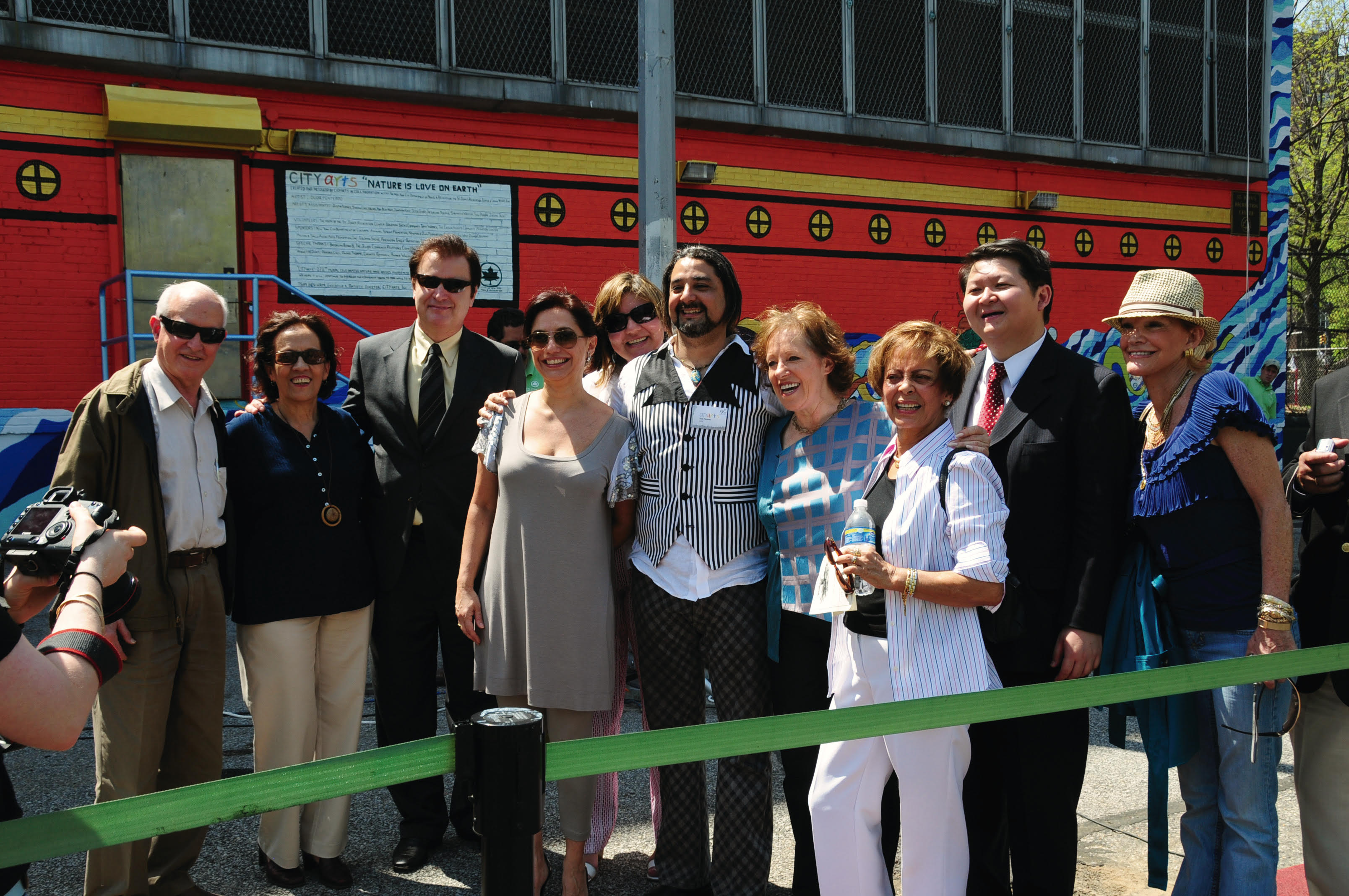
CITYARTS – St. Johns Recreation Center, NYC
Abraham Lubelski / Publisher NY Arts Magazine
“…my art pieces are not an end in and of themselves, but a means of arriving at a fundamental human truth: the struggle of the carnal and the divine in our lives.”
According to the revolutionary Brazilian educator and pedagogical theorist, Paulo Freire, the ideal aim of education is to be the “practice of freedom, the means by which men and women deal critically and creatively with reality and discover how to participate in the transformation of their world.” Continuing Freire’s legacy and heeding the call to radically transform the world through creativity and empowerment, the Brazilian artist, Duda Penteado, has dedicated over ten years to honing not only his own personal art practice, but also to sharing his passion for art with New York City metro area youth through a variety of urban arts outreach initiatives. The most recent of a long list of notable projects is his Global HeART Warming project. Located in Bedford Stuyvesant, Brooklyn, it is a 100 x 72-foot mural commissioned by the CITYarts Foundation, aimed at raising awareness about climate change.
The finished mural, a collaboration executed between Penteado and his students, consists of a Pop-Surreal landscape reminiscent of George Garnett Dunning’s classic animation of The Beatles’ The Yellow Submarine. The joyous and compelling mural depicts a people, flower, bike, and car-filled road, flanked by brick red mountains and verdant rolling hills on one side, and Hokusai-inspired ocean waves on the other. A funky yellow factory is situated in the foreground, and a vibrant collection of city skyscrapers looms in the distance. “Nature is in love with the earth … Nature is spring blossoms … Nature’s tears are earth’s floods” is written in yellow letters hovering in a starry night sky like undulating air currents above a large yellow bird of peace.
“Philosophically, my mission as an artist is to empower and to create a dialogue about difficult issues,” he says. “… In my case, my art pieces are not an end in and of themselves, but a means of arriving at a fundamental human truth: the struggle of the carnal and the divine in our lives.”
Despite the obvious historical links of this kind of large scale public painting to the Mexican Muralist movement of Diego Rivera, David Alfaro Siqueiros, and José Clemente Orozco, Duda’s personal art practice seems to follow more from a long tradition of Latin American modernist, surrealist, abstract, and figurative artists including Juan Batlle-Planas, Rufino Tomayo, Roberto Matta, Jorge de la Vega, Hilton Berredo, and Beatriz Milhazes, as well as the vibrant traditions of street art vital in both New York and many Latin American urban environments.




